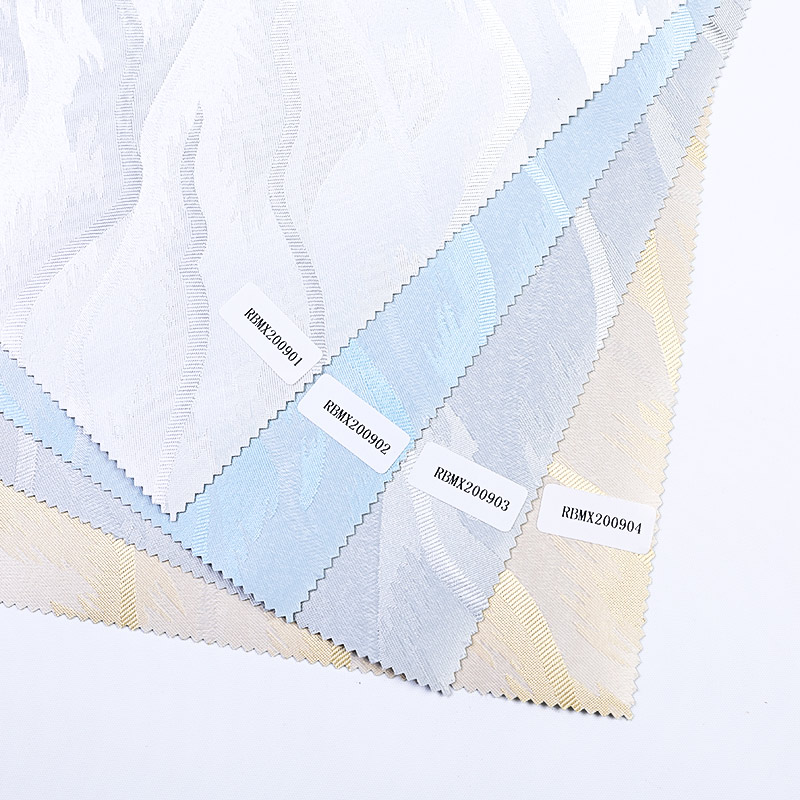The thermal properties of roller blind fabrics play a crucial role in regulating room temperature and enhancing energy efficiency. Here's how:
Insulation: Roller blind fabrics engineered for superior thermal insulation leverage materials with low thermal conductivity. This deliberate choice creates a formidable barrier against the transference of heat, establishing an effective buffer zone between the interior and exterior environments. By curbing the impact of external temperature fluctuations, these fabrics foster a consistently comfortable indoor climate, mitigating the need for excessive reliance on heating or cooling systems.
Heat Reflection: Cutting-edge roller blind fabrics employ advanced reflective technologies to redirect incoming solar radiation. Through intricate design and material selection, these fabrics minimize the absorption of sunlight, thereby curbing heat gain within a space. This feature is especially advantageous in regions characterized by high temperatures or during periods of intense sunlight, ultimately diminishing the dependency on mechanical cooling systems and contributing to a more sustainable energy profile.
Heat Absorption: Tailored for colder climates, roller blind fabrics adept at heat absorption incorporate materials that not only capture but also retain heat effectively. This thermal reservoir acts as a shield against external cold temperatures, preventing heat loss from the interior. The outcome is a warmer indoor environment, and the reduced necessity for extensive heating systems, aligning with energy-efficient practices and ensuring optimal occupant comfort.
Energy Savings: Roller blinds equipped with robust thermal properties stand as frontline contributors to energy conservation. By moderating indoor temperatures, these blinds significantly reduce the demand for heating and cooling appliances. This not only translates to tangible cost savings for occupants but also positions the space as an exemplar of sustainable design principles, reflecting a commitment to minimizing overall energy consumption.
UV Protection: High-performance roller blind fabrics integrate UV-blocking agents or coatings to provide comprehensive protection. Beyond preserving interior furnishings and finishes from the deleterious effects of ultraviolet rays, these fabrics effectively curtail solar heat gain. This dual functionality not only extends the lifespan of interior elements but also contributes to maintaining a comfortable indoor environment by preventing excessive heat buildup.
Glare Reduction: Innovative roller blind fabrics incorporate specialized technologies designed to diffuse or block direct sunlight, addressing the common issue of glare. This not only enhances visual comfort by mitigating harsh light but also contributes to a cooler indoor temperature. The nuanced reduction in glare not only optimizes the usability of the space but also enhances thermal comfort by limiting the influx of intense sunlight.
Regulation of Daylight: Roller blinds with advanced thermal properties offer a nuanced approach to daylight management. By allowing for controlled penetration of natural light, these blinds empower occupants to optimize illumination levels based on preference and necessity. This strategic utilization of daylight not only contributes to effective temperature control but also aligns with energy-efficient practices by harnessing natural light while mitigating its potential heat impact.
Environmental Impact: The integration of thermal fabrics in roller blinds underscores a commitment to environmental responsibility. By enhancing the energy efficiency of a building or space, these blinds actively contribute to the reduction of greenhouse gas emissions associated with energy consumption. This holistic approach reflects positively on the overall ecological footprint of the structure, aligning with contemporary sustainability goals.
RBMX2009

RBMX2009



 EN
EN  英语
英语 中文简体
中文简体












